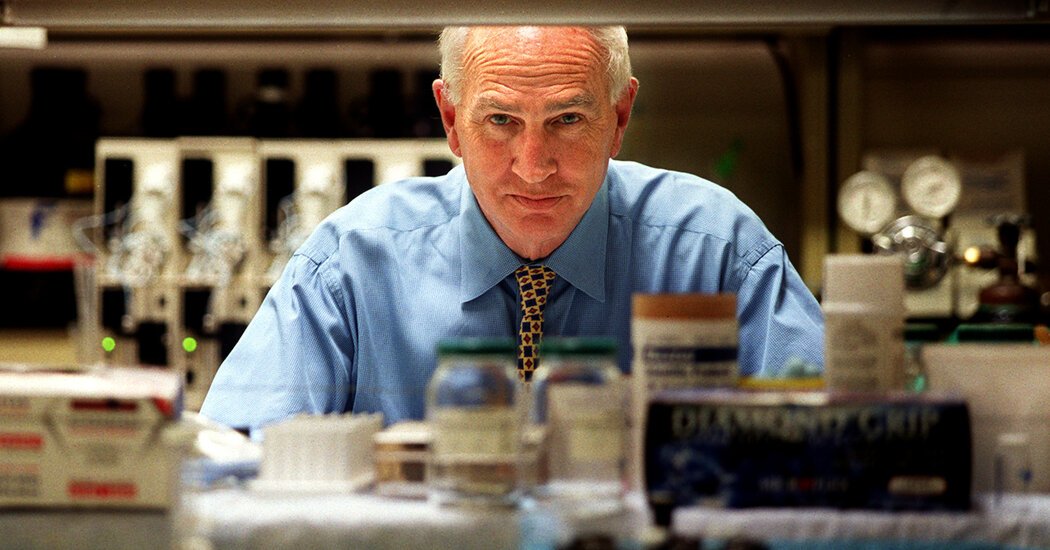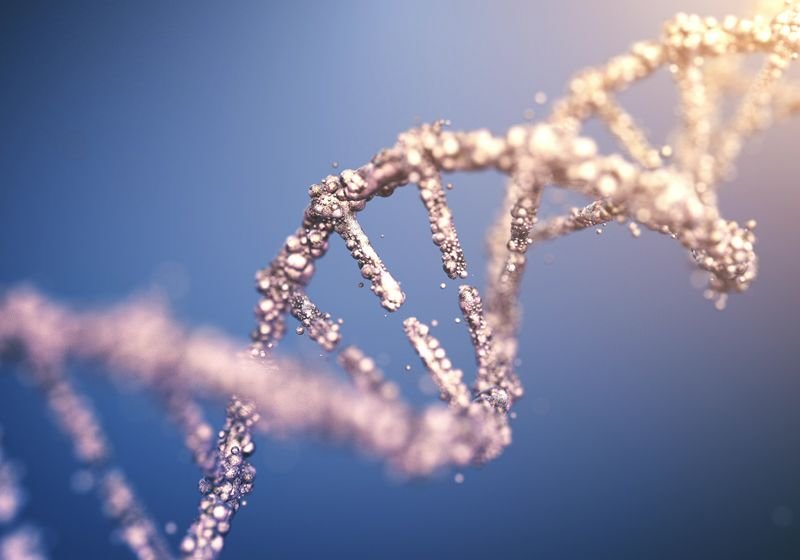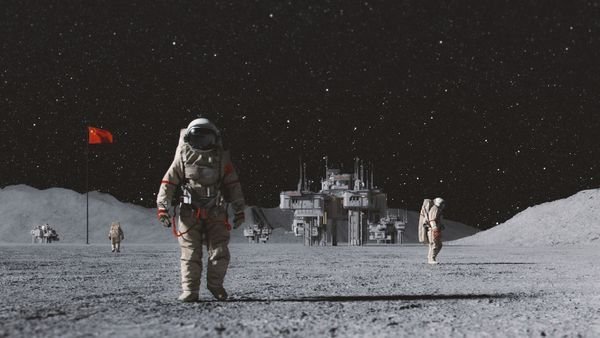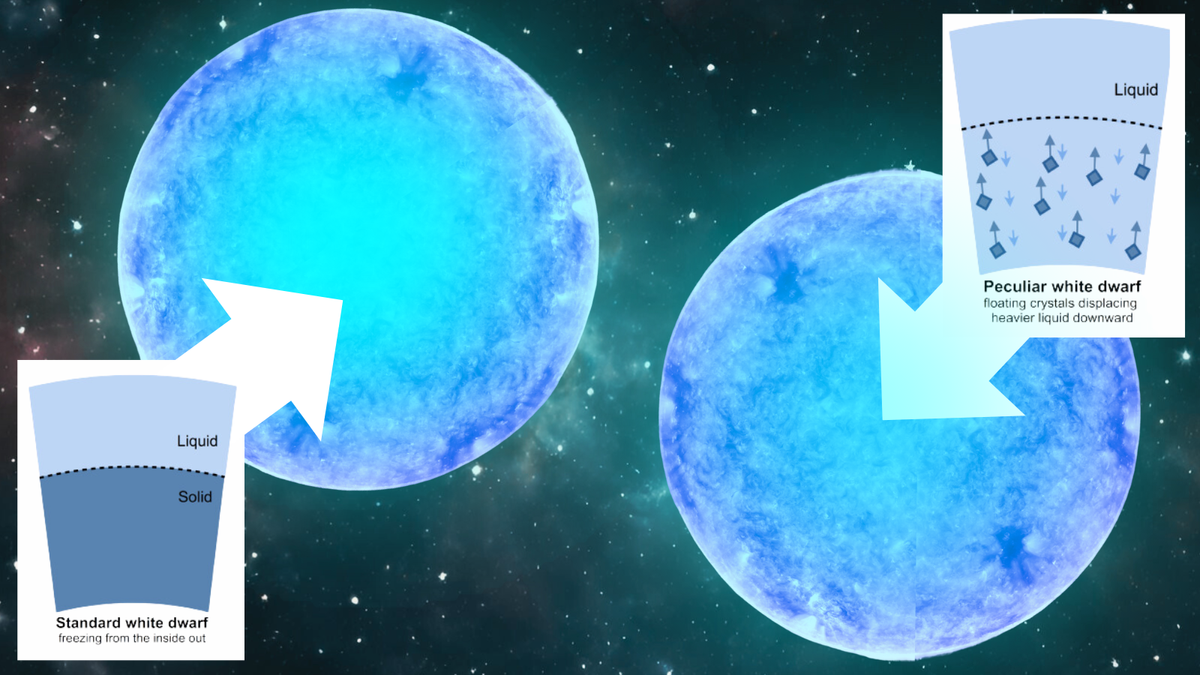Dr. Don Catlin, who built the first U.S. antidoping laboratory and whose research unlocked the chemistry behind previously undetectable performance-enhancing drugs and snared athletes who cheated by using steroids and other banned substances, died on Jan. 16 at his home in Los Angeles. He was 85.
His son Oliver said the cause was a stroke. He said his father had been diagnosed with dementia.
Dr. Catlin, who was sometimes called the father of drug testing in sports, was the director of the U.C.L.A. Olympic Analytical Laboratory, which he started two years before the 1984 Summer Olympics in Los Angeles and which he led until 2007.
His lab tested as many as 45,000 urine specimens a year, looking for traces of banned substances in U.S. Olympians, professional football players, collegiate and minor league baseball players, and competitors at one FIFA World Cup.

“He was a towering legend,” Travis T. Tygart, chief executive of the United States Anti-Doping Agency, said in a phone interview. “His charm and stature in meetings of scientists and nonscientists let him explain complicated science to sports folks and then put on his lab coat and work on carbon isotope ratio analysis.”
Dr. Catlin’s quarter-century at the lab coincided with a period of drug scandals in the sports world, including one involving the Canadian sprinter Ben Johnson, who was stripped of his gold medal in the 100-meter race at the 1988 Summer Olympics in Seoul after he tested positive for the anabolic steroid stanozolol.
Such controversies continued through the 2000s, with revelations that the Bay Area Laboratory Co-operative, or Balco, near San Francisco, distributed steroids and illicit supplements to athletes, including the baseball superstar Barry Bonds and the track star Marion Jones. Also in that era, the cyclist Lance Armstrong returned from cancer to win a record-setting seven consecutive Tours de France using a regimen of banned substances. He was eventually stripped of those titles.
As diligently as Dr. Catlin and the technicians in his lab worked to catch cheaters and uncover new methods of doping, he recognized that he faced a Sisyphean task.
“I’m not saying it’s doomed to failure, but we are always playing catch-up,” he told New Scientist magazine in 2007. “I don’t see all the mass spectrometers and all the chemists in the world really being able to handle this. It is becoming very expensive to develop means to detect new drugs.”
Donald Hardt Catlin was born on June 4, 1938, in New Haven, Conn. His father, Kenneth, was an insurance executive. His mother, Hilda (Hardt) Catlin, ran the home.
After graduating from Yale University in 1960 with a bachelor’s degree in statistics and psychology, he was persuaded by a family friend, who was a surgeon, to study medicine. Five years later, he earned an M.D. from the University of Rochester School of Medicine and Dentistry in upstate New York.
From 1965 to 1968, Dr. Catlin interned and served a residency at the University of California, Los Angeles, School of Medicine and another at the University of Vermont Department of Medicine before returning to U.C.L.A. as chief resident.
While in the U.S. Army from 1969 to 1972, Dr. Catlin worked in internal medicine at Walter Reed Army Medical Center in Washington and, in his final year, ran a treatment center for soldiers who had become addicted to heroin while fighting in the Vietnam War. He told USA Today in 2007 that he had clashed with Pentagon generals over his belief that the addicts should be treated medically and not imprisoned for turning to drugs.
“But they locked ’em up anyway,” he said.
After his discharge, he joined the U.C.L.A. faculty as an assistant professor of pharmacology and medicine. A specialist in pain management, he joined with other researchers in 1977 to publish a study of five patients that examined whether a morphine-like substance in the human pituitary gland could relieve pain and narcotic withdrawal symptoms.
In 1982, Dr. Catlin became the first director of the Olympic antidoping lab, with financial backing of at least $1.5 million from the Los Angeles Olympic Organizing Committee. During the 1984 Summer Games there, at least 11 athletes tested positive for steroids.
Dr. Catlin augmented the lab’s drug testing with research that elevated global efforts to clean up doping in sports.
In the late 1990s, he developed the carbon isotope ratio to determine if an anabolic steroid was produced naturally in the body or came from a banned substance, like a synthetic steroid. In 2002, he revealed for the first time in sports the use of a form of E.P.O., or erythropoietin, which increases endurance by stimulating the production of red blood cells. Three gold medalists in cross-country skiing tested positive for the substance and were stripped of their medals.
Also in 2002, Dr. Catlin identified for the first time a designer anabolic steroid, norbolethone, in an athlete’s urine after it had been introduced to athletes at Balco by the chemist Patrick Arnold.
“That was the first proof that there were these designer drugs out there,” he said in an interview at the time. “It told me that there would be others coming.”
Then, in 2003, Dr. Catlin detected yet another designer steroid, tetrahydrogestrinone, or T.H.G., after a syringe that was brought anonymously to the United States Anti-Doping Agency was taken to his lab.
It was a breakthrough discovery as the active ingredient in “the clear,” a previously undetectable steroid that Balco had provided to many athletes. Barry Bonds testified to a federal grand jury that he received the “clear” and a testosterone-based cream from his trainer, but he said he had been told that they were flaxseed oil and a pain-relieving balm.
Jeff Novitzky, an Internal Revenue Service agent who started investigating the spread of performance-enhancing drugs in 2002, turned to Dr. Catlin after rummaging through Balco’s trash and collecting data that had been posted online by Victor Conte Jr., the lab’s founder and president.
“I cold-called him very early on, and over that year he walked me through everything,” Mr. Novitzky said in an interview. “I had no idea what I was finding. In my trash runs, I found discarded drug wrappers, email communications from athletes, invoices for epitestosterone, and he said the only reason to get epitestosterone is to beat a drug test. I could see the bells ringing in his head that something was going on.”
Dr. Catlin testified in 2003 to the grand jury that investigated Balco and Mr. Conte, who pleaded guilty to steroid distribution and money laundering. He served four months in prison. Mr. Bonds was convicted of obstructing justice, but the conviction was overturned.
Dr. Catlin later discovered several more designer steroids, including methylandrostenol, or madol, the active ingredient in a subsequent iteration of “the clear” that was also found in a raid of the Balco lab.
After retiring from the U.C.L.A. laboratory, he went into business with his son Oliver to provide services that included testing and certifying dietary supplements and nutrition products for banned substances and label claims. Dr. Catlin also continued related research and oversaw testing for human growth hormone, or H.G.H., at the 2008 Summer Olympics in Beijing.
In addition to his son Oliver, he is survived by another son, Bryce, and two grandchildren. His wife, Bernadette (DeGroote) Catlin, died in 1989.
Dr. Catlin said he felt an urgent need to keep the Olympics drug-free.
He told USA Today in 2007: “I can’t think of anything more exciting than the Olympic model, where 220 countries in the world participate, and every four years they send their best to compete against the best from other countries and the best man or woman wins. That’s gorgeous. What could be nicer? Except it’s the drugs, stupid.”










